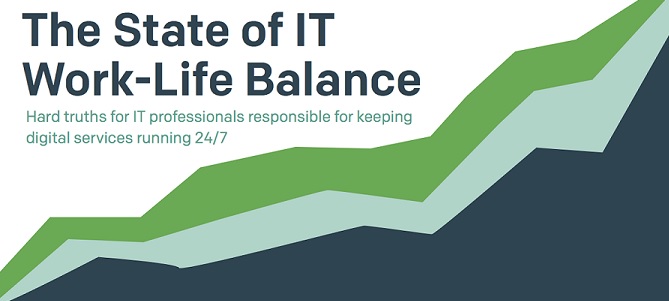
There's no doubt that the technological advances throughout the past several decades have drastically changed how we go about our day-to-day lives. Gone are the days of paper maps and digital cameras, replaced by digital applications available at just the touch of a button — all with high user expectations for seamless performance.
What often goes overlooked in our always-on digital culture are the people at the other end of each of these services tasked with their 24/7 management. If something goes wrong, users are quick to complain or switch to a competitor as IT practitioners on the backend race to rectify the situation.
A recent PagerDuty State of IT Work-Life Balance Report revealed that IT professionals are struggling with the pressures associated with the management of these digital offerings. The survey of more than 800 IT professionals across the US, Australia and the UK indicated that this always-on culture has made the management of digital operations a daunting task for any modern organization aiming to provide quality digital offerings 24/7, wreaking havoc on IT employee work-life balance.

Prevalent Pain Points
According to the previously released PagerDuty 2017 State of Digital Operations report series, the usage of digital services is rising. Consumers rely on the use of these digital applications to accomplish a variety of tasks and have come to expect these services to be fast, secure and easy-to-use.
Failure to meet consumer expectations can have detrimental effects on the companies providing these services, adding pressure to IT teams tasked with delivering on customer satisfaction. In fact, the report reveals that the inability to manage the pressures associated with management of digital services was rated the number one side-effect of fair or poor work-life balance across regions.
94.5 percent of survey respondents believe 24/7 management of digital services results in decreased productivity
The survey also indicated that 94.5 percent of survey respondents believe 24/7 management of digital services results in decreased productivity, making it difficult to provide consistently reliable services.
For some, the burden of the always-on digital lifestyle goes much further than a decrease in productivity. The survey revealed 51.6 percent of respondents in the US stated that being on-call affects their ability to maintain overall health and wellness. When asked how being responsible for digital services impacts members of their family, 25 percent of IT professionals said that it makes their job unmanageable at times.
Visibility Matters
Not only does poor operations health management affect IT professionals and their families, it can have a significant business impact. More than half (52 percent) of IT professionals across the US, Australia and UK reported that their organizations spend between $250,000 and $500,000 on DevOps/ITOps tools to help maintain critical digital services.
In addition to these costs, organizations may face a hefty price tag associated with employee turnover if poor work-life balance isn't rectified. In fact, nearly a quarter (23.1 percent) of survey respondents reported that they would be more likely to search for a new job due to poor work-life balance.
58.9 percent of IT managers don't have the visibility necessary to know when their teams experience a difficult on-call period
Worryingly, the report went on to reveal that 58.9 percent of IT managers don't have the visibility necessary to know when their teams experience a difficult on-call period. Without this visibility, managers are unable to take the necessary actions to course-correct for future on-call periods, potentially impacting an IT professional's overall perception of their work-life balance. Of the respondents who said their managers have slight to no visibility into difficult on-call periods, nearly 1 in 5 (18.1 percent) rated their work-life balance as fair to poor.
The Global Work-Life Imbalance
The survey also showed that while the majority (84.1) of all IT professionals rate their work-life balance as good, very good or excellent, of this 84.1 percent, more than half (56.7 percent) believe that poor work-life balance is just part of the job. Additionally, 40.4 percent agree their work-life balance isn't the greatest but they deal with it anyway.
The responsibility associated with keeping critical digital services healthy is stressful. As result, on-call IT personnel are at high risk for experiencing poor work-life balance, resulting in costly company turnover and lessened productivity. Luckily, there is an alternative. IT teams now have the ability to leverage tools, services, processes and best practices to gain better visibility into difficult on-call periods. These tools statistically measure the impact of incident response on human behavior and can help to reduce the burden of alert fatigue.
